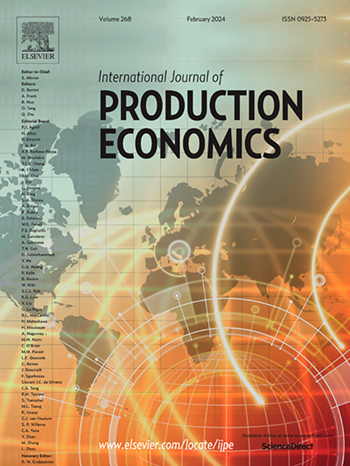生产者延伸责任下服务化的光明与黑暗面
IF 10
1区 工程技术
Q1 ENGINEERING, INDUSTRIAL
引用次数: 0
摘要
服务化的概念是销售产品的功能或用途,而不是产品本身。然而,在服务化的情况下,生产者延伸责任的含义并不简单。一方面,服务化允许制造商保留对产品的所有权,这就减少了制造商在生产者延伸责任下被要求回购报废产品时进行成本高昂的回购程序的必要性。另一方面,服务化扩大了消费者的需求,使那些买不起产品的人仍可通过按使用付费的方式使用产品,从而增加了制造商回收产品的成本。为了研究 EPR 对服务化的影响,我们在模型中加入了三个不同的特征:(i) 按使用付费定价;(ii) 保留产品所有权;(iii) 因 EPR 而重新购买最终产品。制造商可以战略性地选择纯销售模式、服务化模式或包含两种选择的混合模式。我们的研究结果表明,在没有 EPR 的情况下,制造商更倾向于混合模式,因为它能更好地细分不同的消费者。然而,在有 EPR 的情况下,当回收率足够高时,制造商会选择纯销售模式。此外,我们还发现,严格的 EPR 法规和较高的回收率可能会对环境产生负面影响。基于这些结果,我们强调政策制定者需要仔细考虑并设定回收率。本文章由计算机程序翻译,如有差异,请以英文原文为准。
The bright and dark sides of servitization under extended producer responsibility
Servitization has gained popularity with its concept of selling the functionality or use of a product rather than the product itself. However, the implications of EPR under servitization scenarios are not straightforward. On the one hand, servitization allows the manufacturer to retain ownership of the product, which mitigates the need for costly buyback procedures when the manufacturer is required to repurchase the end-of-use product under EPR. On the other hand, servitization expands the demand of consumers by allowing those who cannot afford the product to still use it by paying per use, thereby increasing the costs for manufacturers when it comes to recycling the product. To investigate the impact of EPR on servitization, we incorporate three distinct characteristics into the model: (i) pay-per-use pricing, (ii) the retention of product ownership, and (iii) repurchasing the end product due to EPR. The manufacturer strategically chooses among the pure sales model, servitization model, or a hybrid model that includes both options. Our findings indicate that without EPR, the manufacturer consistently prefers a hybrid model, as it provides better segmentation of different consumers. However, with EPR, the manufacturer will choose the pure sales model when the recycling rate is sufficiently high. Moreover, we find stringent EPR regulations with higher recycling rate may have negative environmental consequences. Based on these results, we emphasize the need for policymakers to carefully consider and set recycling rate.
求助全文
通过发布文献求助,成功后即可免费获取论文全文。
去求助
来源期刊
CiteScore
21.40
自引率
7.50%
发文量
266
审稿时长
52 days
期刊介绍:
The International Journal of Production Economics focuses on the interface between engineering and management. It covers all aspects of manufacturing and process industries, as well as production in general. The journal is interdisciplinary, considering activities throughout the product life cycle and material flow cycle. It aims to disseminate knowledge for improving industrial practice and strengthening the theoretical base for decision making. The journal serves as a forum for exchanging ideas and presenting new developments in theory and application, combining academic standards with practical value for industrial applications.

 求助内容:
求助内容: 应助结果提醒方式:
应助结果提醒方式:


